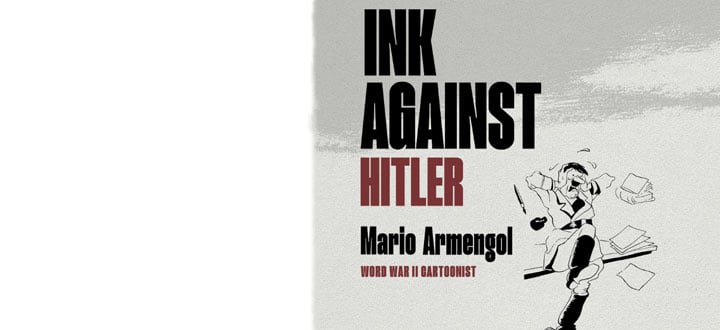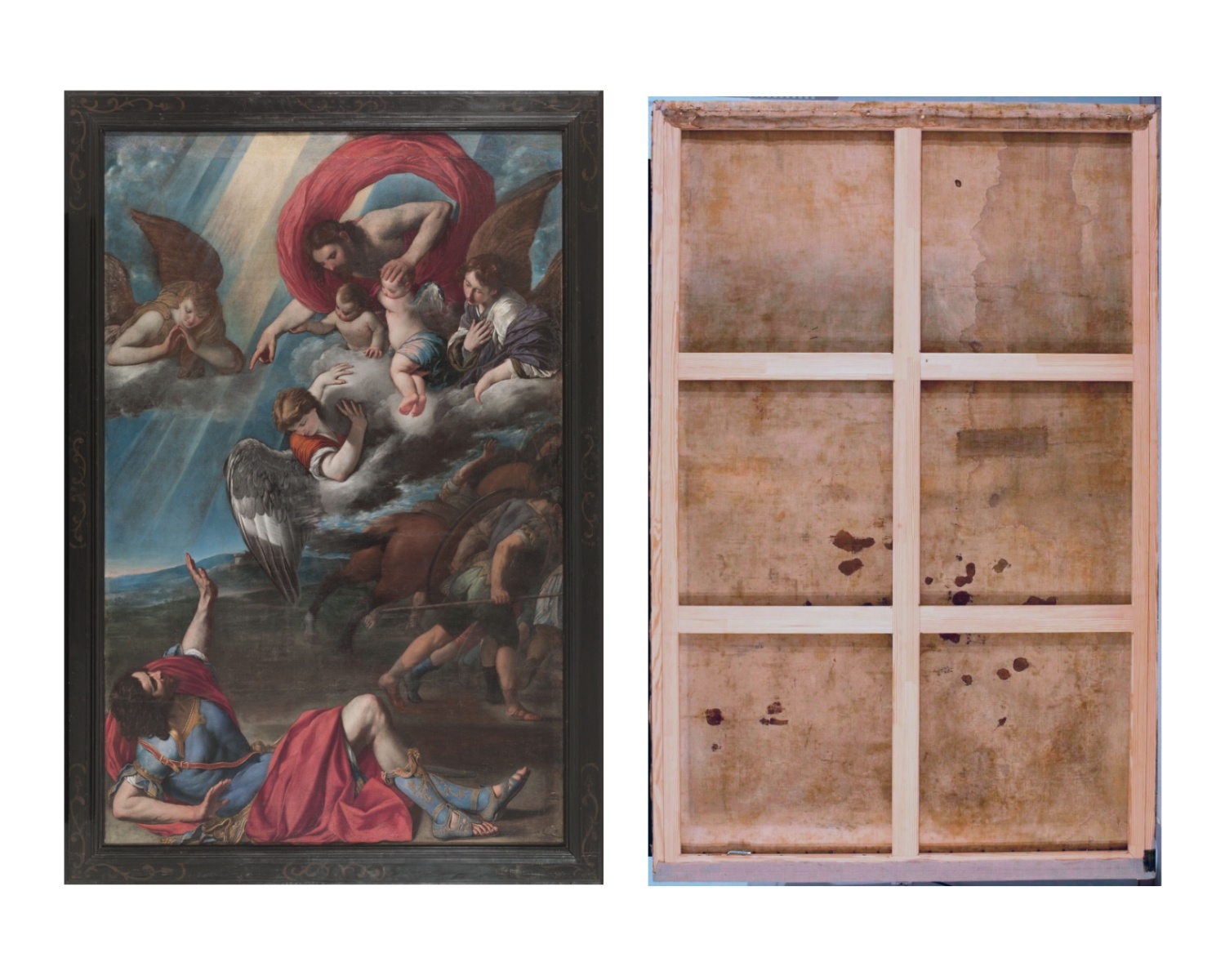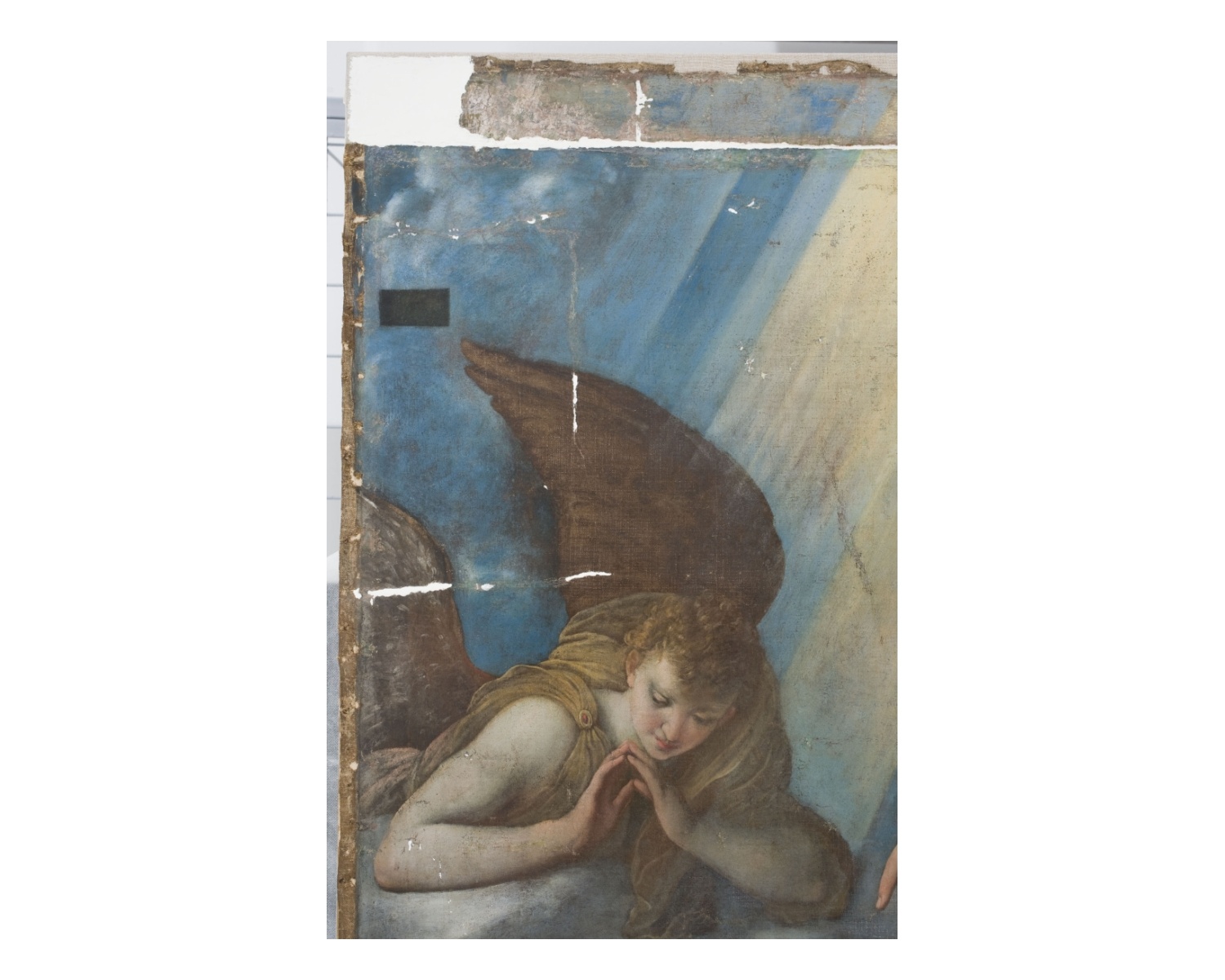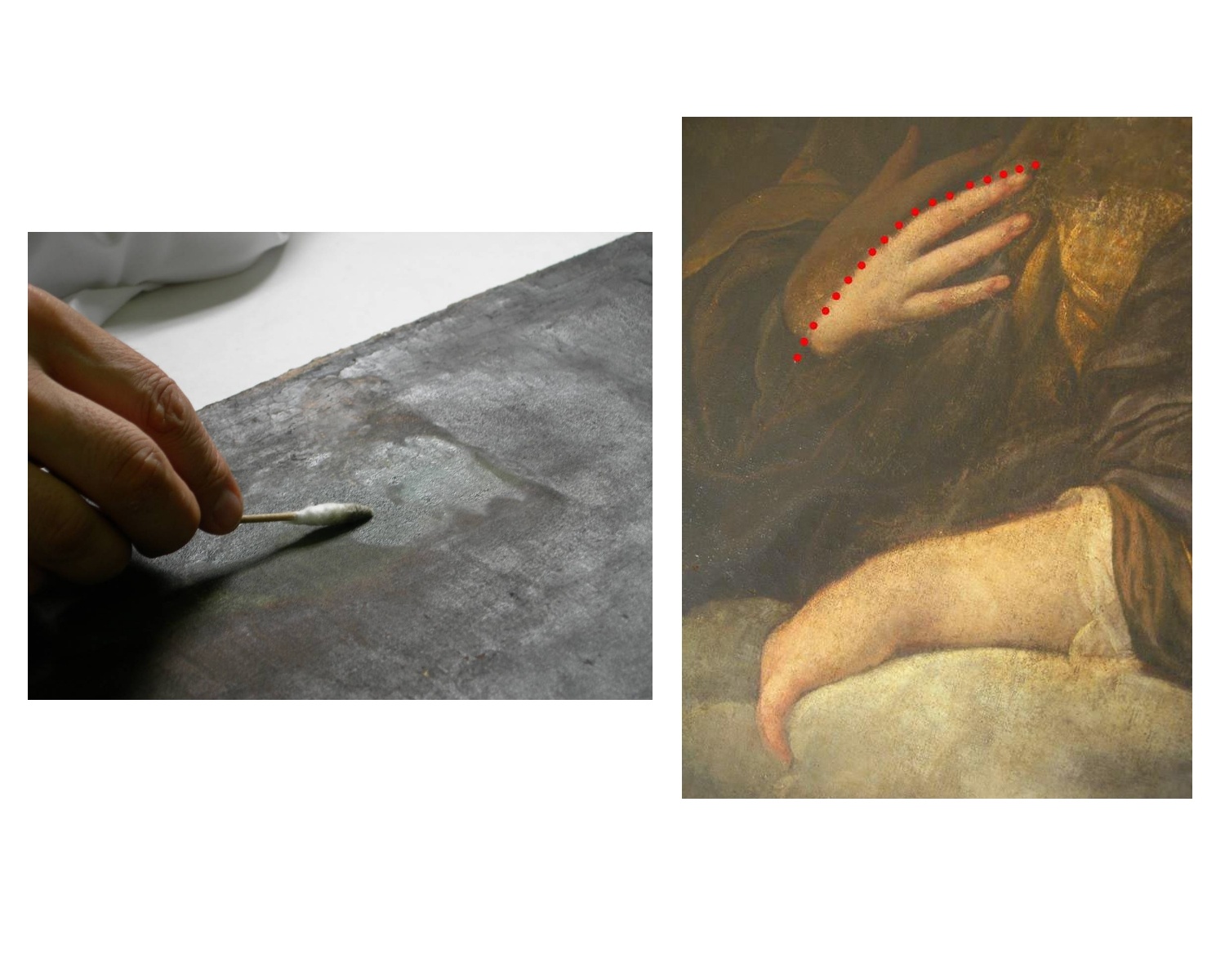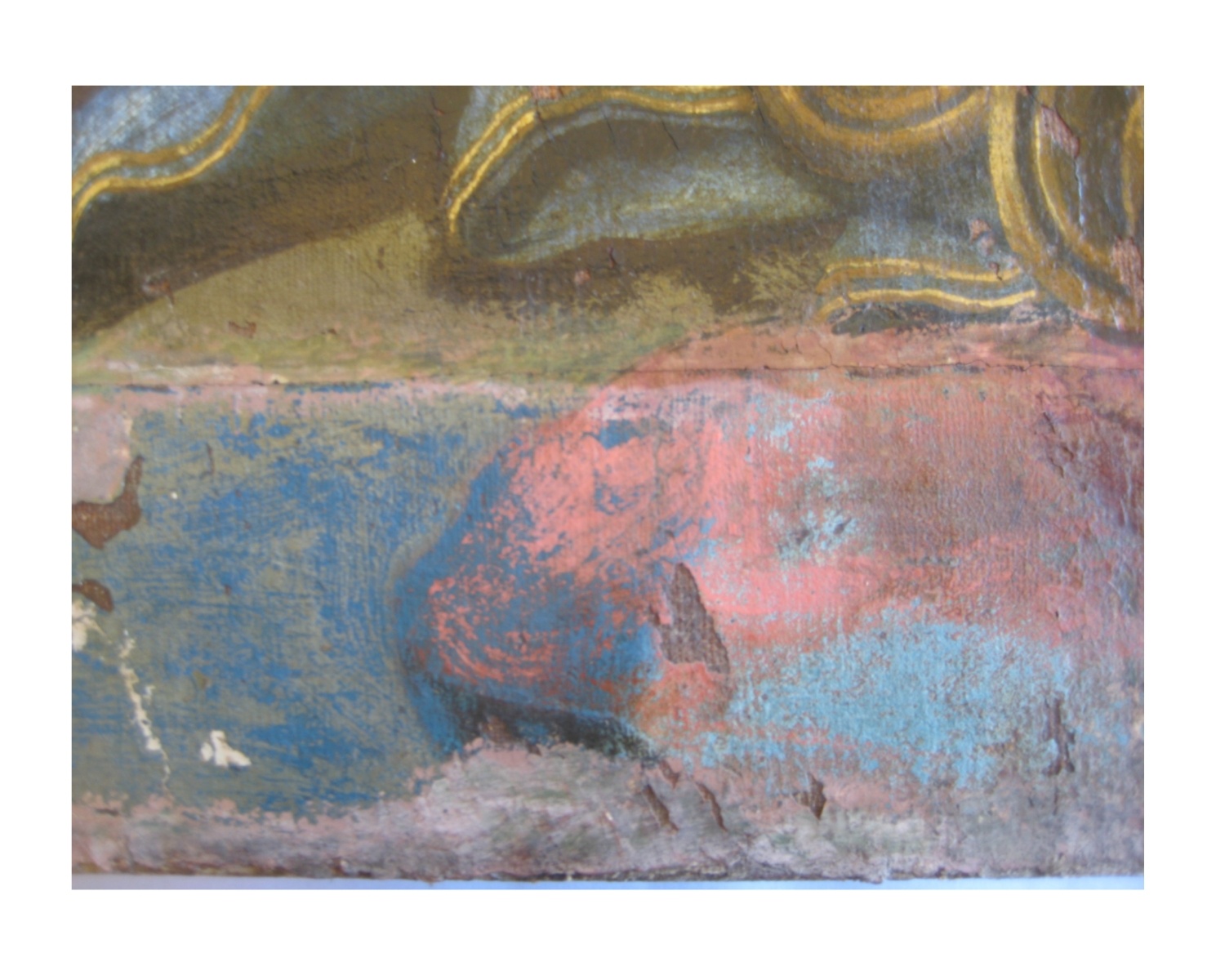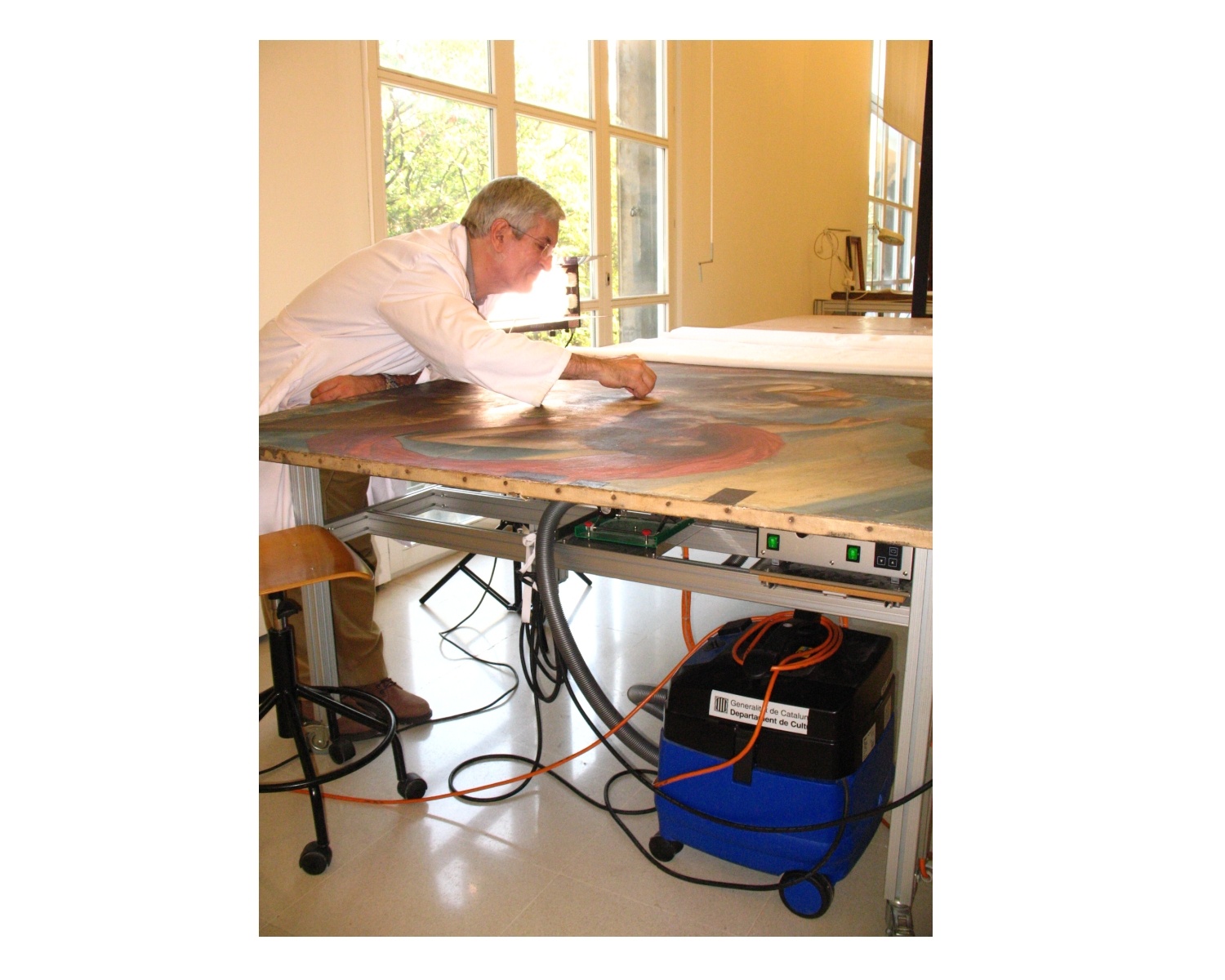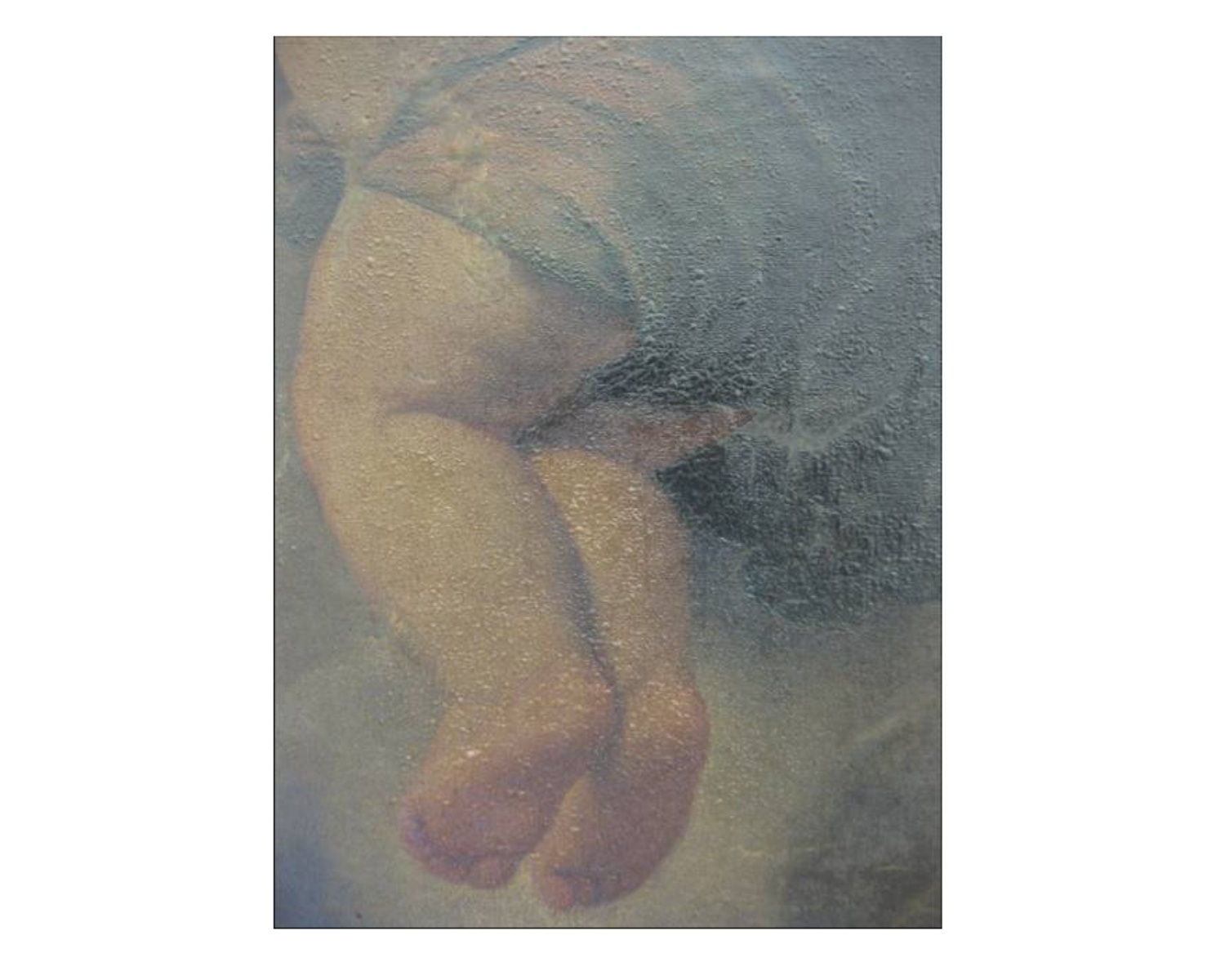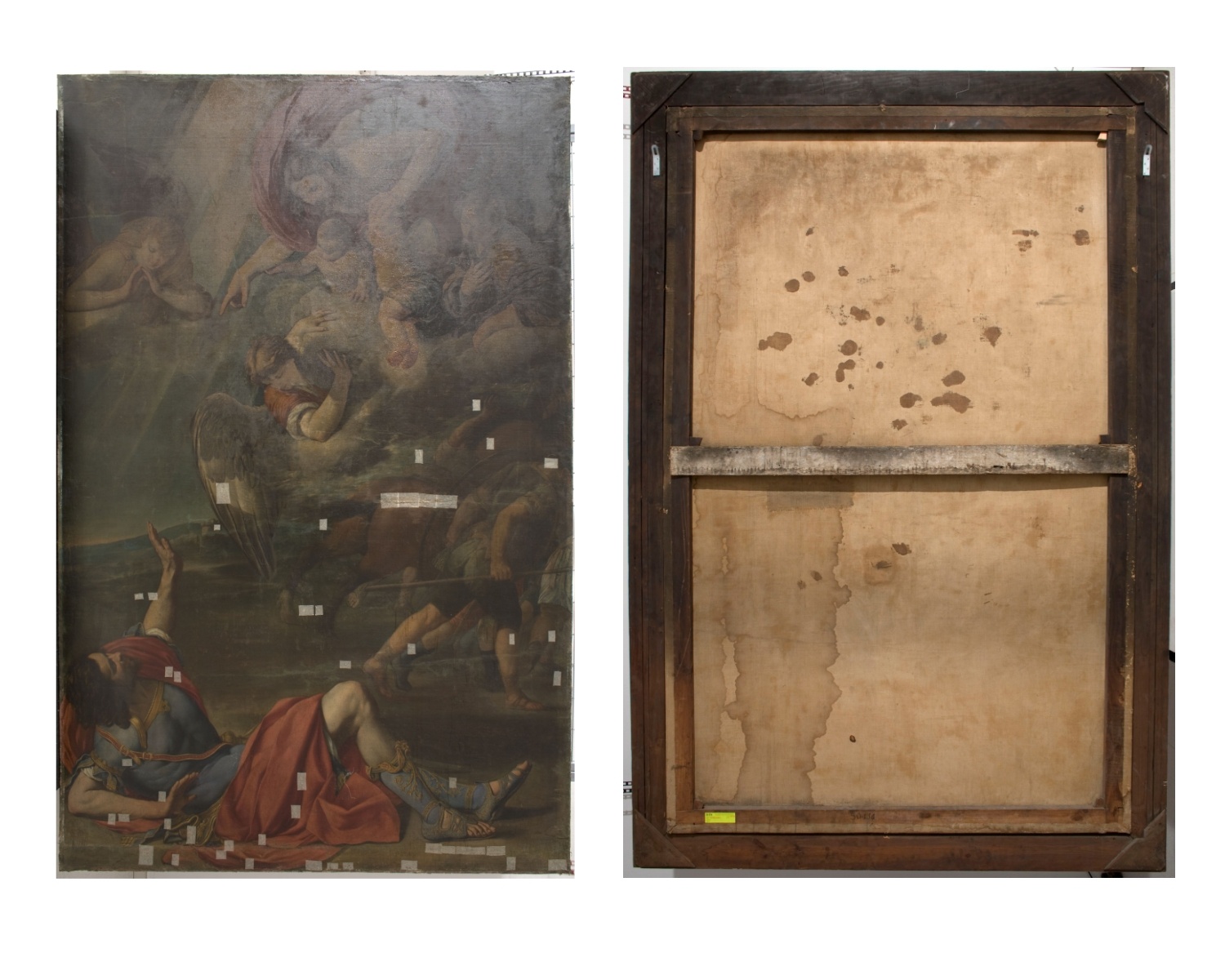Conversió de Sant Pau de Maíno
-
Chromatic reintegration
The punctual losses of polychrome, which are fortunately minor, are rejoined with watercolors, to facilitate a good visual reading of the work.
Once varnished the pictorial layer, just set some punctual with agglutinative pigments and varnish.
If you want to deepen the into the study of the attribution of the work onto Maíno and its restoration, see:
Francesc Quílez, Una nova atribució La conversió de sant Pau de Juan Bautista Maíno (pdf, in Catalan)
-
Treatment of stuccos
The stuccos of the previous interventions has been treated as follows: those in poor condition are removed using humidity with a brush and mechanically. Punctually, some stuccos are leveled and is decided to respect those who are undamaged because it has been proven the stability over time.
To make the stucco it has been used plaster (blanco de España) and as a cohesive natural glue of animal origin (rabbit tail). To get the maximum precition to fill the slopes it is applied by brush.
-
Cleaning. First stage
The blisters of the pictorical layer caused by the fire effect have made conditional the treatment and the cleaning process. Therefore, at the first stage, it has been chosed a cleaning aqueous, followed by a punctual fixation of the pictorial layer. During this process of cleaning, first of all it has been mechanically eliminated the dust of the surface wuth a soft brush and in the reverse by aspiration, removing the deposits accumulated under the frame.
-
Cleaning. Second stage: repainted and reverse
To remove the repainted of the lower strip, it has been applied a chemical solution and mechanically. The tests made with ice have not given good results.
On the reverse, it has not been able to remove the dark spots of coletta (organic adhesive) of the lining canvas. The dry cleaning reduced the dark spots caused by water.
-
Fixation of the pictorial layer
Fixation of the pictorical layer with the table of hot suction, using the hemp paper and applying the sturgeon glue with a brush, pressing gently with a palette to help to lower the blisters caused by the heat of the flames during the fire
Once fixed the areas of pictorial layer with the risk of losses the oxidized varnish is removed, which the is responsible for the yellowed tone paint. -
Previous interventions and radiography
Regarding previous interventions, the painting underwent modification: it was cut to the right of the spectator, top and bottom, leaving the entire left side.
We can see the addition in the X-Ray, a strip of canvas painted on the base of the composition which not occupied its original place. It corresponds to the top of the painting which had been cut to be pasted, turning it 180degrees, at the bottom.
-
State of conservation of the pictorial layer
The work presents a brown surface layer, dark and heterogeneous, with blister, losses and dryness in the paint layer, as a result of the fire effect.Regarding the support, the wood of the frame was breaked on the top and can observe traces of moisture as a consequence of the water used for extinguishing flames. -
The conversion of Saint Paul by Juan Bautista Maíno
For a report that is conserved in the archives of the Museu Nacional, we know that the state of conservation of this work large format (157 x 244.5 cm) was the result of a fire that occurred on April 1, 1985, in a municipal building of Barcelona, this work decorated one of the walls. During the sinister, the painting was exposed to high temperatures and as much the original material and the additions of the several restorations reacted between them, which suffered transformations and deformations. As a result as a result there were some considerable damages.Painting restorer: Carles Pongiluppi
Wood restorers: Vicenç Martí i Pere de Llobet



